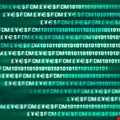Infosecurity Opinions

Comment: Time to Change the Security Game
Hackers today assume they’re winning, especially because the security industry is seemingly stuck on the ‘security insanity cycle’. Invincea’s Anup Ghosh offers insight into why the ‘cycle’ approach is simply not working when it comes to enhancing security and, unless security professionals change the way they think about it, they will be ‘winning’ a losing game

Comment: The Lifecycle of a Firewall Rule
Reuven Harrison, CTO of Tufin Technologies, offers some insightful hints and tips on how to go about getting your firewall rules in order to improve their performance, security and manageability.

Comment: Balancing security and productivity needn’t be all or nothing
Managing difficult exchanges between security and productivity when designing effective password policies is a major challenge for many IT decision makers. Security is time consuming and complicated, which almost always means extra work for someone. BeyondTrust’s Geoff Haggart looks at the question: is reduced security risk worth the extra work?

Comment: Night Dragon will not be defeated $44.99 at a time
In IT security, deceptive marketing can sometimes create confusion. Marc Maiffret of eEye Digital Security says that, in order to decipher the true from the false, end users must have clear understanding of what threats mean and how they can be defended against

Comment: Stopping Employees from Stealing Your Data
Whether leaked intentionally or accidentally, the practice of information sharing has been known to cause problems. Sean Glynn of Credant Technologies examines how to limit the information users have access to without thwarting trust, and how encryption can play an integral part.

Comment: Is key management the new compliance?
Jon Geater, director of technical strategy for Thales and a co-founder of the OASIS KMIP key management group, considers the effects of focussing solely on compliance to form the basis of information security strategy

Comment: Building a Bridge between Legislators and IT Firms
Elizabeth Hyman, vice president of public advocacy at CompTIA, provides an overview of the recent launch of TechVoice.org, a new online community to discuss federal policy issues that directly impact the IT industry and to connect members of the industry with policymakers. She discusses key issues and provides examples of how TechVoice serves as an education and advocacy resource.

Comment: Public vs. private sector information security
More dedicated staff, yet less awareness: according to recent data, the private sector lags behind with regards to data protection, while public sector organisations lead the way. David Cowan, head of security at Plan-Net, explains how firms can improve their IT security and avoid losing money, clients and reputation.

Comment: Securing the remote working environment
Vodafone's Andy McFarlane examines how, through effective mobile and data management within a secure environment, communications can become an enabler of successful growth

Comment: The Seven Habits of Highly Infected People, and Your Security
Modeled after the popular self-help book, this article by NaviSite’s chief security officer, Allen Allison, discusses how to eliminate the most common and easiest to avoid habits that introduce security risks and governance violations that can imperil an organization’s sensitive data.

Comment: War and Rumors of War in Cyberspace
Craig Robinson, chief operating officer of GlobalSCAPE, argues that cyberspace has become a contested battlefield with long-term implications. Robinson discusses the potential for cybersecurity practitioners to learn from traditional defense practices, especially in defining durable policies and strategies for operating in the cyber domain.

Comment: The do’s and don’ts of data classification
Data classification is often referred to as something of a black art in the field of IT risk management as Sean Glynn, VP product development with Credant Technologies, explains…

Comment: Some Documents Require Fine-Grained, Dynamic Security
Knowledge workers are increasingly using their abilities to discover patterns where none were previously known: to find connections across disparate sources of data, or to identify suspicious behavior on the basis of anomalies in data streams. Open, flexible access to documents is essential for this process, and there is no way back to a world of siloed information. But, as IBM’s Joshua Fox examines, this very openness increases the risk of exposing sensitive data about an organization or its customers.

Comment: Security breaches cost health care industry £4bn annually
By adopting a secure file transfer solution and abandoning risky file-sharing practices, an organization can better protect its confidential data and simplify compliance with industry regulations and data-security laws, says Paul Steiner, managing director, Accellion EMEA

Comment: Reducing Document Security Risks without Raising User Resistance
Recent high-profile leaks have served as a wake-up call to CISOs worried about whether their sensitive documents could be at risk of intentional or accidental disclosure. But forcing unwieldy policies on employees can be disruptive. Dr. Claudia Böttcher of Brainloop says the answer lies in adopting methods that make document security transparent, or second nature.

Comment: The state of encryption
Dave Everitt, general manager EMEA at Absolute Software, examines the potential problems with relying on encryption for data security, and puts forward the case for a layered approach to safeguarding information.

Comment: Security Secrets Your IT Administrators Don't Want You to Know
Philip Lieberman, CEO of Lieberman Software and well-known cybersecurity expert, gives insight into what's lacking in most organizations' identity management, password, access and auditing policies.

Comment: Will High-Speed Malware Crash the Internet?
Napatech’s Daniel Joseph Barry looks at what the challenges are, and what can be done, to avert the economic impact of an internet collapse.

Comment: Security must emerge from the shadows
Andrew Wyatt, chief operating officer at software security firm Clearswift, explains why overhauling outdated ‘stop-and-block’ attitudes to security is vital in today’s business environment, and how bringing IT security out of the shadows within an organisation can reap rewards

Comment: Rewards for Hacking – Good, Bad or Ugly?
If a hacker finds a flaw in your program, then the bounty paid out might not be enough. Anthony Haywood of Idappcom gives his thoughts on the bug bounty trend



